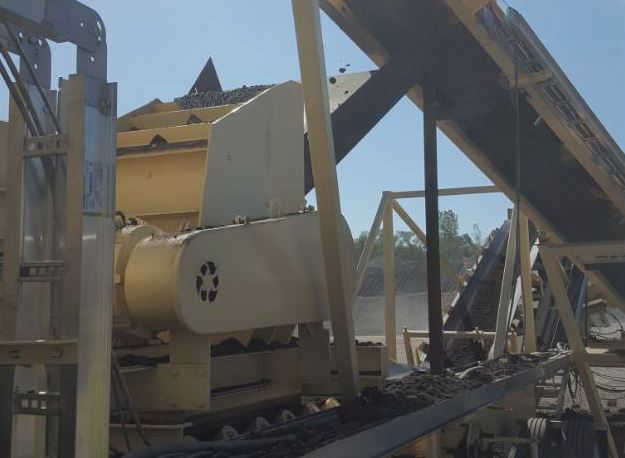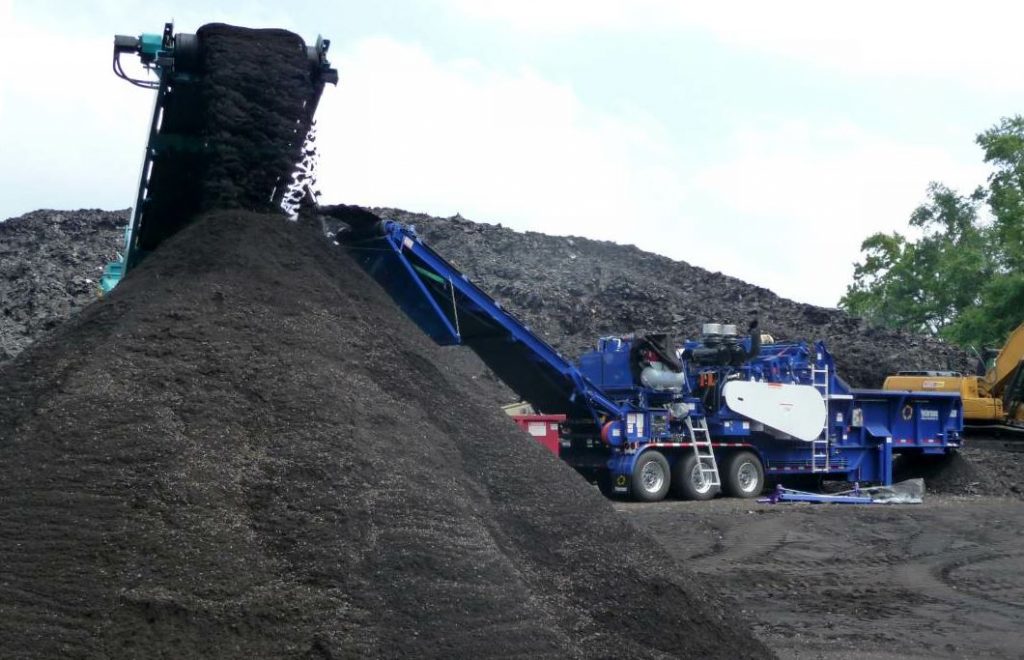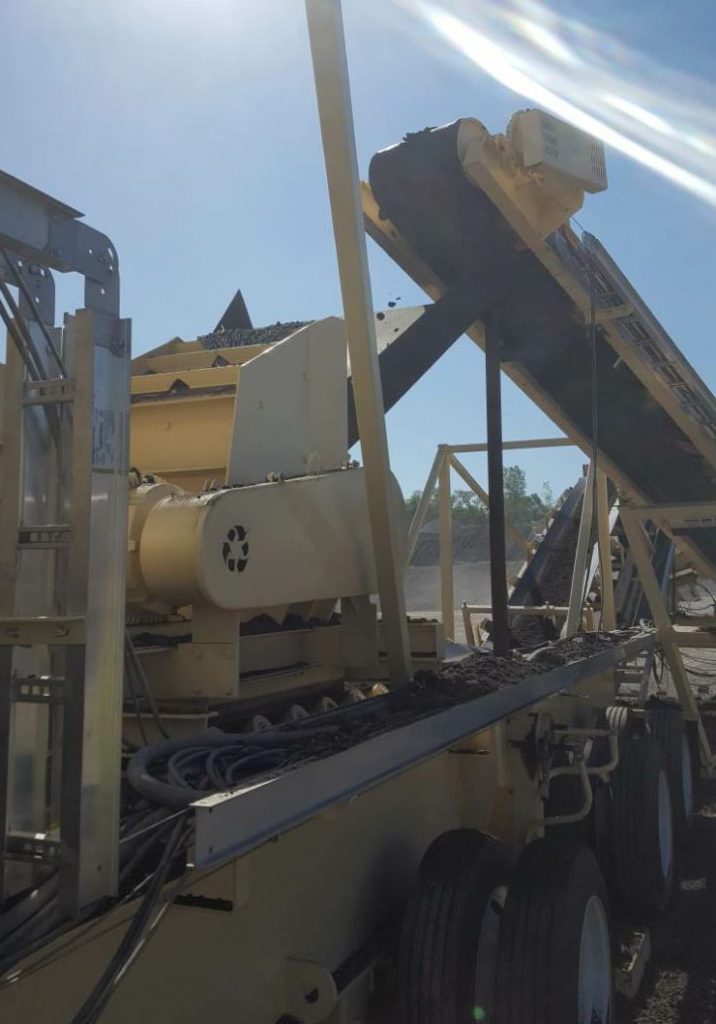Solve Your Sticky RAS
BY Sandy Lender

Not all project specs allow the use of reclaimed asphalt shingles (RAS). For those that do allow RAS, you want to have this financially lucrative product on hand—ground and ready to go. The financial benefits of any material, though, lessen with subsequent handlings of said material. If the RAS pile has settled, moistened and agglomerated, what’s a producer to do?
The Problem:

If the RAS is allowed to sit exposed to the elements, it could agglomerate and require additional handling before use in the mix. Photo courtesy Peterson Pacific.
To agglomerate = to gather “things” into a mass of jumbled, clustered confusion
Agglomerated RAS happens when ground asphalt shingles are allowed to sit in a conical, heavy pile without protection from direct solar heat or moisture. In other words, inclement weather conditions and delayed use both play a role in “melting” the ground shingles together in their pile. If you have elected to cover the pile with a tarp, condensation under the tarp will create a shell of agglomerated material for you to overcome.
The Solution:

N.B. West combines the RAS and RAP on the recycle best before the material goes to the crushers. Photo courtesy N.B. West.
Plant consultants over the years have recommended adding sand to the ground shingles as they are stockpiled to assist in preventing agglomeration from occurring. Steve Jackson of N.B. West in Missouri warns producers to stay aware of recycle weight when using this method of problem-solving. Don’t fall into any bad practices of over-estimating your reclaimed binder weight due to the sand in your mix or you may find your mix going out of spec.
A suggestion Jackson shared is to knock the RAS apart before it goes into the drum. A grizzly or other screen that shakes the RAS during the feeding process, without sending it back through the grinding process, gives you the opportunity to de-agglomerate your material without an additional handling step. Jackson shared that they use a Gator crusher on the recycled screen deck on the recycle weigh belt. “It re-crushes any clumps that make it through the grizzly screen.”
For additional best practices, make sure you include a dust capture or other type of conveyor hood system to keep fines, dust or fibers from causing any air-quality issues for you.
